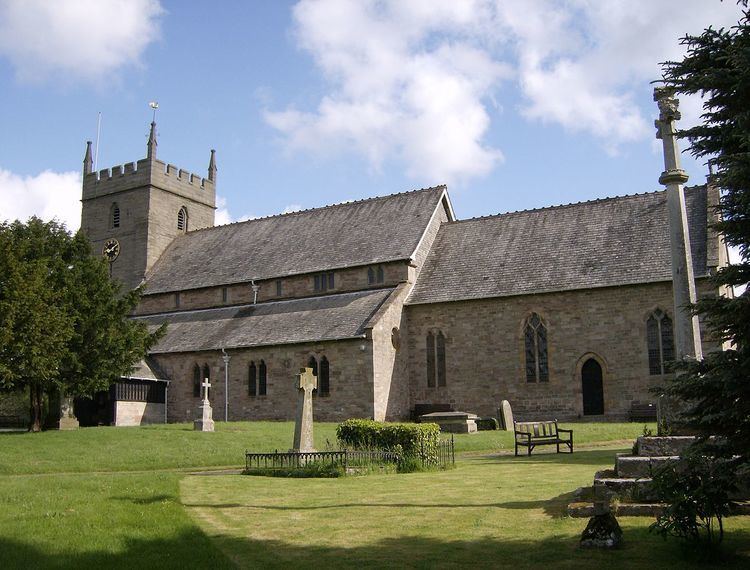Population 1,579 (2011) Civil parish Burghill Local time Tuesday 2:21 AM | OS grid reference SO474449 Unitary authority Dialling code 01432 Post town Herefordshire | |
 | ||
Weather 3°C, Wind W at 3 km/h, 89% Humidity | ||
Spuds bday burghill 09
Burghill is a village and civil parish in Herefordshire, England, north-west of Hereford. The parish includes the villages of Burghill, Tillington, Portway and Eltons Marsh. It was originally a small village of farms and orchards situated on the road from Moreton-on-Lugg.
Contents
Map of Burghill, UK
Andy and dallow burghill
History
There was originally an iron hill fort in prehistory on the hill north of Hereford. One of the earliest settlements in the shire it stood on a roman road from Kenchester; it was probably recognised by Alfred the Great's 'burghal hidage'. Burghill was called Burgelle in the Domesday Book, and in Pipe Rolls, 1169. By 1212 the Red Book of Exchequer used the name Burghulle. The village of Burghill was a feudal manor with a strip field system of villein cultivation. Its true significance however was as a nobleman's manor owned first by Bernard de Neumarch, William de Braose, and thence to Humphrey de Bohun, Earl of Hereford. It was conncted to the manor of Tillington in 13th century until Roger de Burghill sold it to Earl Berkeley of Berkeley Castle, Gloucestershire.
The manor of Burghill passed through various scions of the de Burghill family until 1303 when the de Mynors share past to Godfrey de Gamage; both families renowned locally. In the early modern period the estate was split up when Griffin Barton bought in part before in 17th century Richard Witherstone built The Lodge.
A Norman church, St Mary the Virgin, It was graced with a visitation from the romantic poets Wordsworth, who frequented the county often, T.S.Coleridge, and Robert Southey, a poet laureate. In the churchyard stood an ancient Yew tree, that can live for a 1,000 years, the trunk in the early 1800s measured 25 ft (10 m) girth. A dozen such trees were known as the Twelve Apostles. The disciples were used to decorate around the font inside the church, which was rare as a lead covered example around its base. In about 1838 a large oak tree fell on the church and crushed the font.
The church dates from 13th century in the north aisle of clerestory nave, the south aisle is 14th century. The chancell was also 14th century despite the imposition of modern "bays" to the identification, the arcades were perfect in 20th century.
The village hall, the Simpson Hall, has been modernised. There is a golf club, Burghill Valley Golf Club, in the heart of the village. The whole area is surrounded by apple and pear orchards and is a centre for tourism. The local pub is the Bell Inn, situated between Burghill and Tillington. The vicar at the church is the Rev. Preb. Jimmy Morrison.
In the Doomsday Book, compiled soon after the Norman Conquest, the name of the village is spelled Burgelle; in 1169 in the Pipe Rolls, Burchil; in 1212 in the Red Book of the Exchequer, Burghulle. It has been Burghill for the last eight centuries.
It has been suggested that Burghill may have been the site of the first castle to have been built in England. It would have been built before the Norman conquest, about the year 1051, by Normans in the service of Osbern Pentecost, a follower of Ralph de Mantes and supporter of Edward the Confessor.
Governance
Burghill falls within the electoral ward of Burghill, Holmer and Lyde. At the 2011 census the population of this ward was 3,309.
